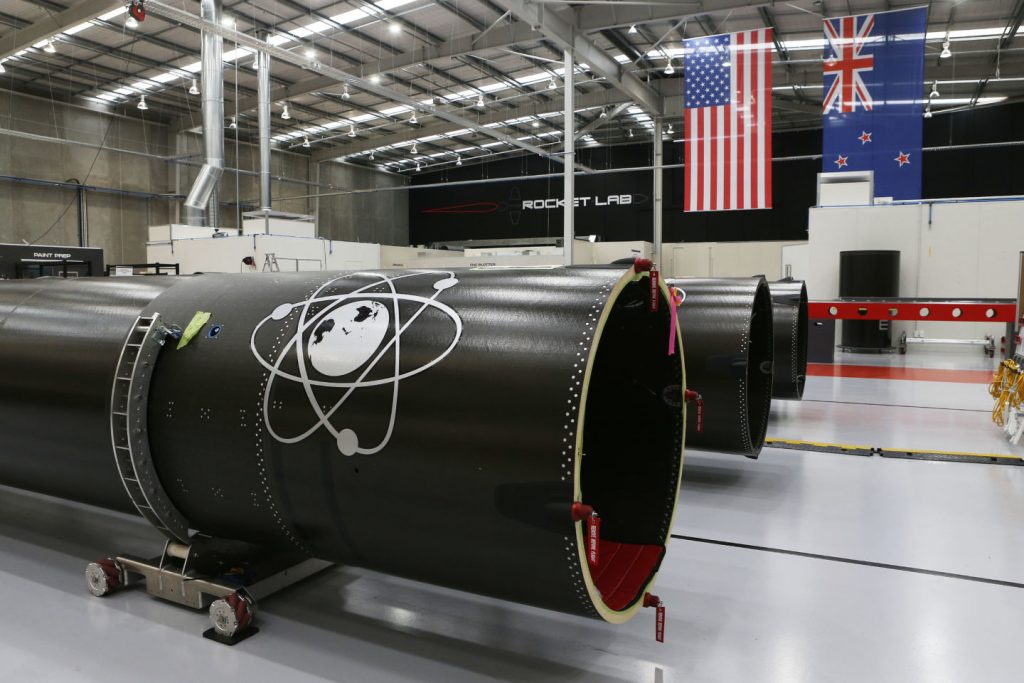3D printing is becoming a hot commodity once more as numerous startups make their way to the stock market via mergers with special purpose acquisition companies (SPACs). The latest is Rocket Lab, which has announced that it will go public via a merger with blank-check firm Vector Acquisition Corporation (Nasdaq: VACQ). The new organization, which will trade under the Nasdaq symbol RKLB, is valued at $4.1 billion.
The small rocket industry seems to be enamored with 3D printing as a means of producing complex rocket parts more quickly and affordably than possible with traditional manufacturing technology. In 2015, New Zealand’s Rocket Lab was the first to kick off the trend with its almost entirely 3D printed rocket engine, Rutherford.

Rocket Lab recovered the first stage of its Electron booster for the first time ever during the “Return to Sender” mission, which launched on Nov. 19, 2020.
(Image: © Rocket Lab via Twitter)
Not only was it the first small rocket developer to rely on 3D printing so heavily, but the Rutherford is the world’s first battery-powered rocket engine, relying on an electric motor rather than gas, resulting in a more lightweight system. The main prop valves, injectors, pumps and engine chambers are all made using electron beam melting technology and can be 3D printed in just 24 hours.
“In the history of spaceflight, Rocket Lab is one of only two private companies that has delivered regular and reliable access to orbit,” Rocket Lab CEO Peter Beck said in a statement. “This milestone accelerates Rocket Lab’s ability to unlock the full potential of space through our launch and spacecraft platforms and catalyzes our ambition to create a new multi-billion-dollar business vertical in space applications.”
Since its first successful launch in 2017, the startup has continued to make a series of firsts, not the least of which is the first rocket sent to orbit from New Zealand, a country with no national space program. Rocket Lab has since launched nearly 100 satellites into space, being used to explore such projects as deorbiting space debris, establishing internet in space, and conducting maritime surveillance. In 2020, Rocket Lab recovered the first stage of its Electron launch vehicle, paving the way to reusable rockets and lower costs for future missions.
Once deal is complete, Rocket Lab will have about $750 million in cash, including $320 million from the trust account of Vector Acquisition and another $470 million via private investment in public equity of $10 per share of common stock led by Vector Capital, BlackRock, Neuberger Berman and others. Vector Acquisition shares increased 27% Monday after the announcement, trading at $13.10 as of 9:53AM ET.

Rocket Lab New Premesis Imagery, Auckland, 11 October 2018. Copyright Image: William Booth / www.photosport.nz
The IPO will help drive the startup even further, with other points on its roadmap already in the works. Later this year, the company will launch a satellite into lunar orbit on behalf of NASA in anticipation of a Moon-orbiting outpost the space agency plans to set up called Gateway. The company also unveiled its medium-lift rocket, Neutron, capable of carrying an eight-ton payload for deep space missions and human spaceflight. It is designed to carry over 90 percent of the types of satellites forecast to launch through 2029 at lower costs.
Rocket Lab is not the first in the newspace industry, nor the 3D printing industry, to rely on SPACs to go public. Richard Branson’s Virgin Galactic went public via SPAC in 2019. Desktop Metal did the same at the end of 2020 and Markforged did so in February 2021. Beck explained that going public will allow the company to raise the funds needed for Neutron and other projects. It will also allow Rocket Lab to acquire the businesses necessary for building the firm the way that Beck envisions.
The 3D printing industry has received a great deal of attention as of late, in part due to the emergence of a slew of new bound metal printing companies and technologies, as well as the realization that businesses need methods for circumventing supply chain disruptions. In turn, we’ve seen a number of exciting mergers and acquisitions reminiscent of the industry almost a decade ago. What will the next merger or acquisition be? Check out our recent series to see some guesses.
Subscribe to Our Email Newsletter
Stay up-to-date on all the latest news from the 3D printing industry and receive information and offers from third party vendors.
You May Also Like
NSF Awards Kentucky $1M for Advanced Manufacturing
The National Science Foundation has awarded a $1 million grant to the University of Louisville for the Advancing Manufacturing and Building Construction Technologies (NSF AMT) project. This initiative is part...
3D Printing News Briefs, May 11, 2024: 3D Printed Stent, Tower, Sculptures, & More
We’re starting off with medical research in today’s 3D Printing News Briefs, as researchers in Korea used CT images and 3D printing to fabricate an educational simulator for a mastoidectomy....
3D Printing Unpeeled: Wind Turbines, Probiotics and Lenses
TPI Composites, ORNL and Ingersoll Rand are working to make wind turbine tooling segments that can be 18.3 meters long. These elements also include resistive wires that help keep the...
Tethon 3D Releases Cost-effective Bioprinter
Tethon 3D, known for its ceramic-loaded DLP materials, custom resins, and DLP 3D printers, has recently released a bioprinter. Vat polymerization printers like DLP systems have been widely used by...

































